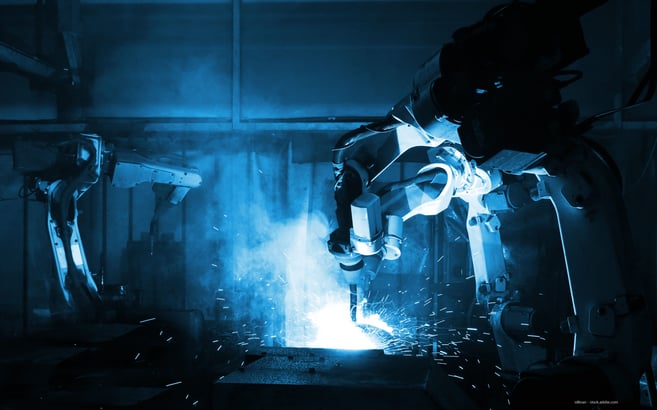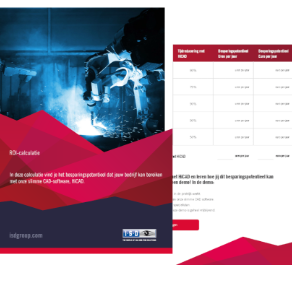
Innovation in the metalworking sector is nothing new. More and more companies ar looking for smart ways to reduce costs and produce more efficiently. The application of robots is an example of an innovative solution and a smart investment for the future. After all, a robot can work for you 24/7, is extremely accurate and fast. There are plenty of advantages tob e mentioned, but what are four important things to consider when you want to robotise your metalworking machines?
Robots are in fact smart machines that are controlled by software. You need the right software for this, such as CAD software for digital drawings. Next, it is important to have an idea of which files (STEP, NC or DXF files) you need and which software packages to export these files. Many metalworkers receive a 2D file from a customer which they have to convert to their own standards or a 3D model. It saves time if you work with CAD software, which works with both 2D and 3D models, so that you can convert them easily and quickly. In short, which software fits your robot's software?
In addition to CAD software, you often also need CAM software to control your metalworking machines. In this case, the process is as follows: the CAD software models and writes out your file, which you then need for your CAM software that controls the machines. Sometimes you don't need CAM software and you can load drawings directly from your CAD software into a press brake, for example. With a punching machine, however, you usually need CAM software to nest your plates. It is advisable to map out this process as well as possible.
Nowadays, you can automate almost anything, but this requires large investments. Besides the implementation of the robot, you also have to take into account maintenance costs and the training of your employees. The most advanced metalworkers have a complete welding line, but perhaps it is just as efficient for you to buy a fork-lift truck and have someone transport the sheet metal from the punch-nibbler to the press brake. So always make a cost-benefit assessment beforehand.
Robotisation of your metalworking machines makes production vulnerable to cybercriminals. Robots are often connected to various digital systems via the internet. Vulnerabilities in one of these systems or your company network make robots accessible to hackers or other malicious parties. With the necessary security risks and consequences for your processes. It will not be the first time that a production process has come to a standstill because of a cyber attack. Be aware of this, have your systems checked regularly and put an emergency procedure in place.
Are you also constantly looking for innovative solutions to cut costs and increase productivity? Do you keep up with all the developments related to working more efficiently? Very smart. Then download our white paper on increasing your productivity as a metal worker.




